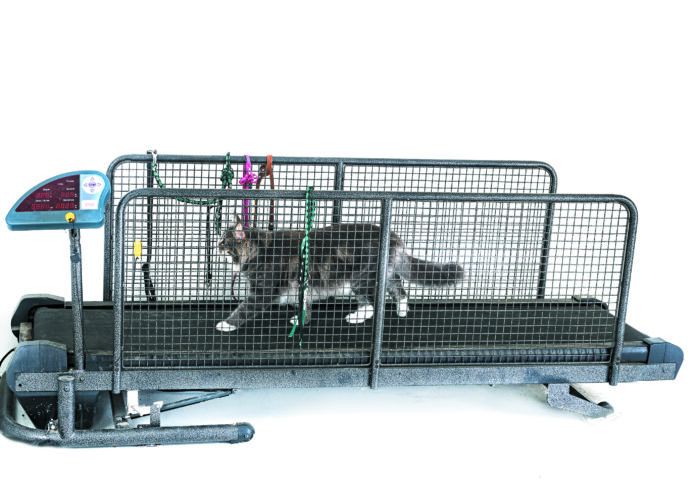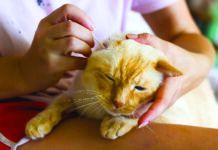Until now, mice have been used to research how the neurology of the spinal cord affects movement and allows animals to keep their balance. But it’s hard to translate the results of such research to useful information about how to help people if they have balance problems or spinal cord damage. That’s because mice remain crouched as they move along. A mouse is not likely to fall even if there’s a break in communication between the spinal cord and neurological sensors throughout the animal’s body, which normally send helpful signals about how to remain upright.
Enter cats, whose unique sense of balance has more in common with people than it may appear. That’s why researchers at the Georgia Institute of Technology, Canada’s University of Sherbrooke, and Drexel University in Philadelphia have been studying them. They are looking for clues on how to improve the walking ability of people with balance problems who are more prone to falling than others, as well as people with partial spinal cord injuries. Prior research has suggested that cats can walk even if the connection between the brain and the spinal cord is partially disrupted.
What the research looks like
The investigators trained cats to walk on a treadmill at a pace that a person might go (with all procedures of the study in accordance with the policies and directives of the Canadian Council on Animal Care). Then they electronically stimulated the sensory nerve that transmits information from the top of the foot to the spinal cord in such a way that it simulated hitting an obstacle. From there they looked at how the cats corrected their gait in response to the induced stumbling.
What they found was exactly how the other three limbs coordinated movement to improve stability and maintain balance. They also saw an increase in the activity of muscles that flexed the knee and hip joints in the affected limb, in addition to such things as toe height and step length. Simply put, they learned that when a cat trips, the sensation triggers spinal reflexes that ensure the other three limbs stay on the ground, keeping the cat upright and balanced, while the limb that hits the obstacle reacts to a signal to step over it.
Implications for human balance and walking
By learning the specifics of how neurological and sensory signals from the body inform the spinal cord and brain about movement, researchers may be able to make it easier for people with impaired balance to keep from falling.The researchers also aim to bring new understanding of the neuronal feedback system because it could lead to progress in the treatment of spinal cord injuries. The study suggests that activation of the right neurons can affect the function of the neuronal network below the site of any spinal cord damage, in effect helping to reactivate injured spinal cord networks.
The scientists are currently developing models of cats’ musculoskeletal and spinal neural control systems to compute signals related to gait length, velocity, and the force of muscles, as well as pressure on the skin in the limbs. All of the work is improving our understanding of the neurologic mechanisms that control walking.
And you thought cats just looked good as they landed on their feet.
© Cynoclub | Bigstock
Cats in the study were taught to walk on a treadmill, something like the cat
pictured here.




